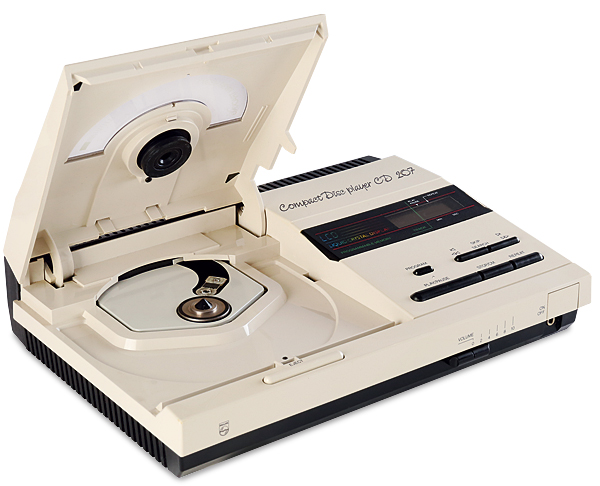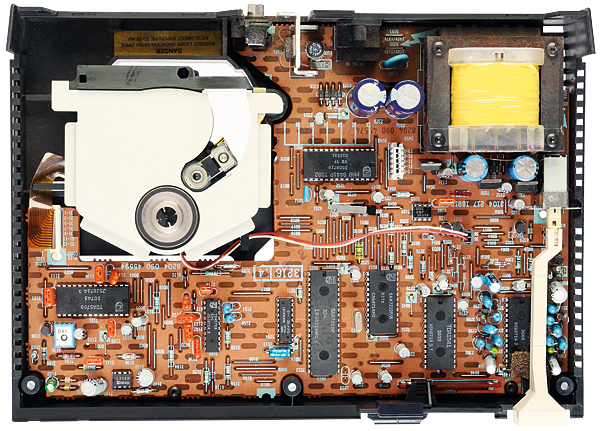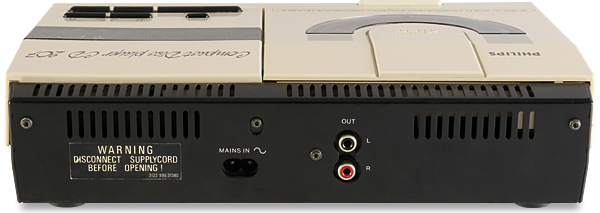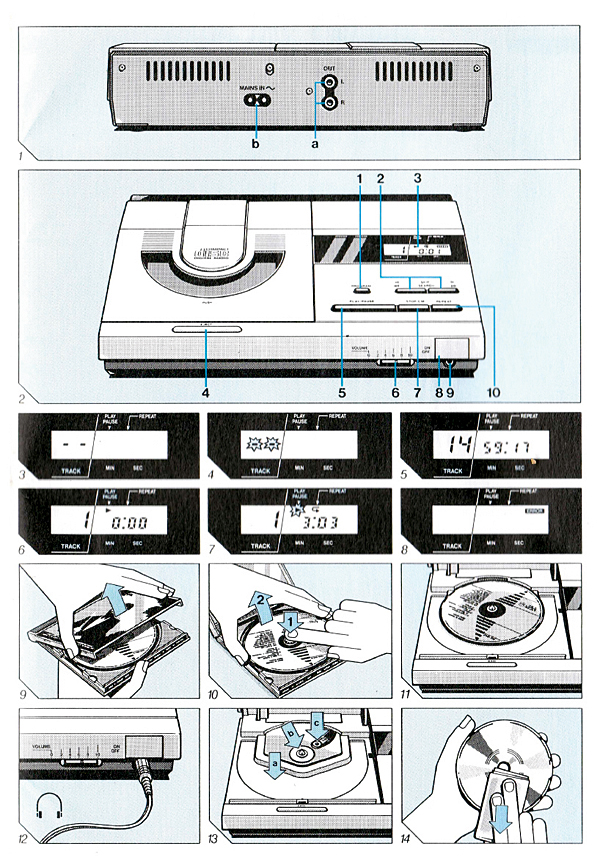Philips CD 207 CD Player Page 2
![]() Tim Listens
Tim Listens
The sound of Philips's earliest 16-bit machines was initially a matter of controversy among serious listeners, some feeling that musically they represented a backwards step. Certainly anyone replacing an original Philips CD100 with a CD 207 in 1987 would have noticed that the warm, embracing and slightly wistful sound of the first generation 14-bit chipset had been replaced with something altogether more forward and matter of fact.

Since the key Philips virtues of phase linear analogue filtering and dual DACs were retained, the ability to project big, three-dimensional soundstages remained, however. This was because it was one of the key advantages of the technique.
The 16x4 package improved rapidly during its first years of production and comparing the CD 207 with an early Marantz CD-73 shows that the sound has become marginally less stark. Despite using much of the same circuitry and many of the same devices, the CD 207 cannot match the outstanding performance of the range-topping CD 960 [HFN Jul '20]. Yet it comes surprisingly close given the obvious differences in cost and status.
It's the refinement in the midband that sets this series of Philips players apart. Cymbals and snares shimmer rather than spit, strings resonate and vocals sound just that bit more realistic than when heard through other 1980s players. The trade-off was once a mild veiling of the treble and a slight general haziness with the original 14-bit system, but this was largely rectified with the 16-bit version. Sade's 'Paradise' [The Best Of Sade; Epic EK85287] sounded pleasingly natural on the CD 207, the only penalty being that the sound was a little bland and tonally grey compared to the luxurious presentation of the CD100 and the sharp focus displayed by the best from Japan.
However, further listening eventually convinced me that this is a sensible compromise. Like choosing a cartridge, it isn't always the most dramatic sounding model that gives the most musical satisfaction in the long term. The balance struck in the design made an hour of highlights from Bizet's opera Carmen [Philips 426 040-2] simply fly by. This particular recording is a large-scale production by the French national orchestra and it was the scale and space of this that the funny little Philips machine captured with aplomb.

Stage Struck
Some players sound closed in, others just make a pool of sound around each loudspeaker, but the CD 207 produces a realistic soundstage that requires very little concentration to visualise. What's more, front-to-back depth, that most elusive of properties, was present in spades. Just as important was the mechanical silence of the player. Yes, there was some rattle and click, but nothing to intrude on the silences in the performance. In the end, all the player needs is a touch more drama to make it perfect, and this could be obtained by partnering it with an amp and speakers able to bring their own spark.
Like most 1980s Philips CD players, the CD 207 has a level of performance that belies its odd styling and rather basic standard of finish. Listened to blind I'm sure it would satisfy many, but it looks out of place with almost any partnering equipment of suitable quality. A paradox, then, but one worth exploring if you are becoming bored with black boxes.

For those who like the sound of the CD 207 but can't abide having an off-white or bright red plastic object in their rack then the more conventionally styled CD373 is very similar internally but looks far more discrete. As for those with a sense of fun, why not drop in a TDA1541S2 (Double Crown) DAC and replace the SMT ceramic capacitors in the DEM networks with film types from Wima? Do no more; that should be enough to turn the ugly ducking into something really special.
Buying Secondhand
CD 207s are less common than the related Philips models of the era, like the CD160, CD471 and CD373, but are still not that difficult to find. The red one appears to be the rarest, the off-white one the most common. Fault patterns closely follow those of any late '80s Philips player. The infamously troublesome 33µF capacitor in the focus circuit is of a more reliable type in most CD 207s, so difficulty or failure in reading the disc is normally due to a fault in the optical block itself. Bear in mind that the CDM2P type used is not interchangeable with the standard variant while the similar one found in the CD10 portable won't fit as it has a different sort of spindle motor.

Some CDM2 failures are due to the collimator lens becoming unglued inside – a well equipped workshop should be able to deal with this, but it isn't something for the beginner to tackle at home. Another source of problems is poor soldering around the mains transformer, the voltage regulators and the sockets at the back. Always check this before more advanced fault finding begins. Finally, beware of faulty LCD units, usually evidenced by black patches that appear from the corners and eventually obliterate the digits.
Hi-Fi News Verdict
This is an easy machine not to take seriously because of its odd appearance, but don't let that put you off – it's built like proper hi-fi inside. Seen either as a quirky collectable or a very useable player in a system intended for serious listening, it makes a fair amount of sense. I enjoyed my time with the Philips CD 207 so much that I'm now seriously considering buying one for my own use – a red one of course.























































